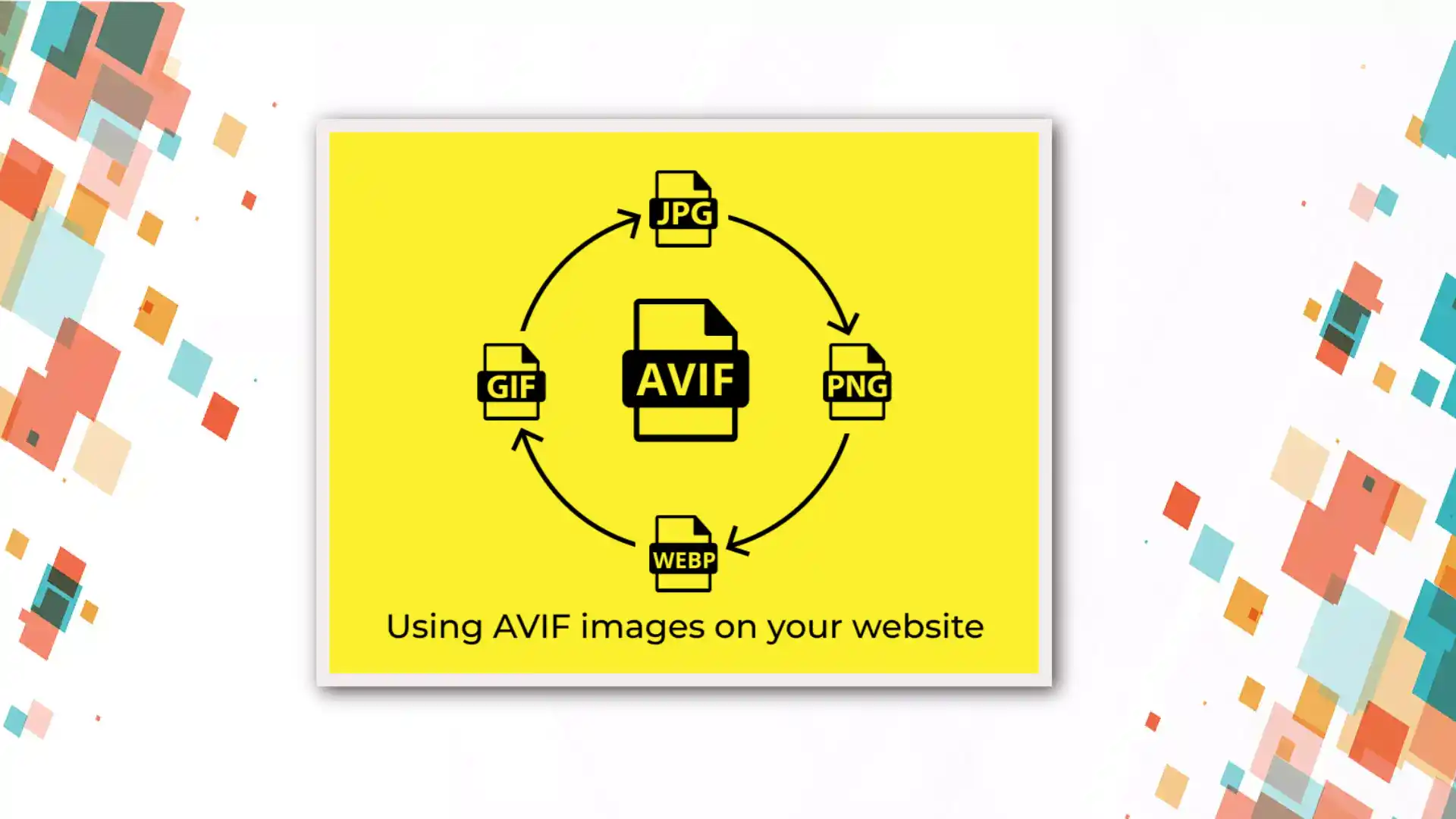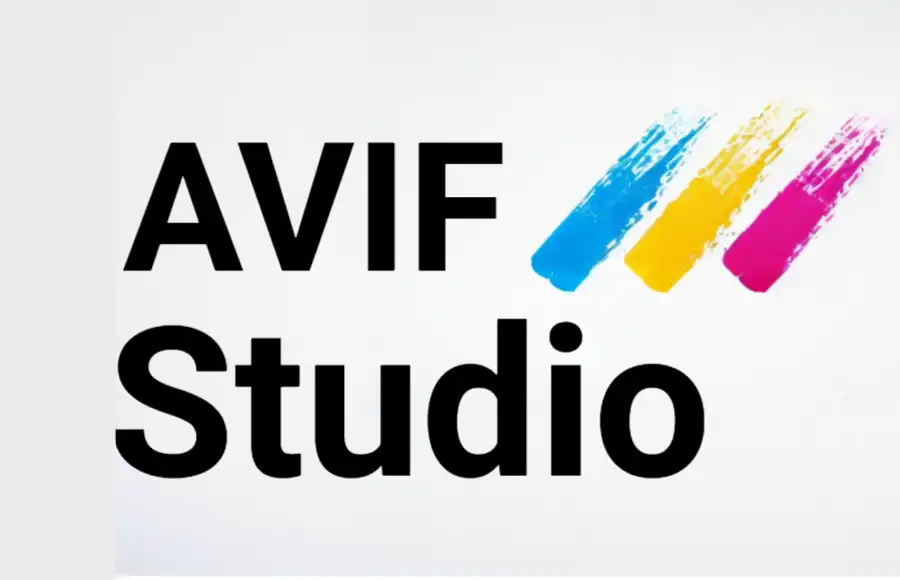The Uses of AVIF Image Format

AVIF, or AV1 Image File Format, is revolutionizing the way we handle images on the web. With its superior compression capabilities and impressive image quality, AVIF offers numerous benefits for web developers, designers, and end-users alike.
One of the primary uses of AVIF is in optimizing website performance. By significantly reducing file sizes while maintaining high image quality, AVIF helps websites load faster and consume less bandwidth. This is particularly crucial in today's digital landscape, where users expect fast-loading websites and mobile responsiveness.
Moreover, AVIF's efficient compression algorithm ensures that images retain their quality even at lower file sizes. This is advantageous for websites that rely heavily on visuals, such as e-commerce platforms, blogs, and portfolios. With AVIF, developers can strike the perfect balance between image quality and performance without compromising user experience.
Another key use of AVIF is in enhancing mobile browsing. As mobile devices become the primary means of accessing the internet, optimizing images for smaller screens is essential. AVIF's ability to deliver high-quality images at reduced file sizes makes it ideal for mobile optimization, ensuring that websites look stunning across all devices without sacrificing loading speed.
Furthermore, AVIF's compatibility with a wide range of devices and browsers makes it a versatile choice for web development. Whether users are accessing a website on a desktop computer, tablet, or smartphone, they can enjoy the benefits of AVIF without any compatibility issues. This simplifies the development process for web developers and ensures a consistent experience for users across different platforms.
In addition to its uses in web development, AVIF is also gaining traction in digital media production. With its support for features like alpha channels and animated images, AVIF offers new possibilities for content creators and designers. Whether it's creating visually stunning graphics or optimizing multimedia content for streaming platforms, AVIF provides the flexibility and efficiency needed to meet the demands of modern digital media.
In conclusion, the uses of AVIF extend far beyond simple image compression. From improving website performance to enhancing mobile browsing and enabling innovative digital media experiences, AVIF is reshaping the way we approach image optimization and delivery on the web. As the adoption of AVIF continues to grow, it's clear that this next-generation image format has the potential to revolutionize the digital landscape for years to come.
Frequently Asked Questions
- What are the primary benefits of using AVIF image format?
- How does AVIF contribute to website performance optimization?
- How does AVIF compare to other image formats like JPEG and PNG?
- In what ways does AVIF contribute to mobile optimization?
- What role does AVIF play in digital media production?
- How does AVIF ensure compatibility across different devices and browsers?
- How does AVIF support optimization for web-based content?
- What makes AVIF a versatile choice for developers and designers?
- How does AVIF contribute to reducing bandwidth consumption?
What are the primary benefits of using AVIF image format?
AVIF offers several primary benefits for image compression and delivery. Firstly, it provides superior compression efficiency compared to other image formats like JPEG and PNG. This means that AVIF can significantly reduce file sizes while maintaining high image quality, resulting in faster website loading times and reduced bandwidth consumption. Additionally, AVIF supports advanced features such as alpha channels and animated images, making it versatile for a wide range of use cases in web development and digital media production.
Another primary benefit of AVIF is its compatibility across various devices and browsers. Unlike some proprietary image formats, AVIF is an open standard that is supported by major web browsers and platforms. This ensures that images encoded in AVIF format can be viewed consistently across different devices and screen sizes, providing a seamless user experience. Moreover, AVIF's compatibility with existing image editing tools and content management systems makes it easy for developers and designers to integrate into their workflows.
How does AVIF contribute to website performance optimization?
AVIF contributes to website performance optimization primarily through its superior compression capabilities. By reducing image file sizes without sacrificing quality, AVIF helps websites load faster and consume less bandwidth. This is particularly important for improving user experience, as faster loading times can lead to lower bounce rates and higher engagement.
Furthermore, AVIF's efficient compression algorithm ensures that images maintain their quality even at lower file sizes. This means that developers can use AVIF to optimize images for mobile devices without compromising visual fidelity. With the increasing prevalence of mobile browsing, this ability to deliver high-quality images efficiently is crucial for ensuring that websites perform well across all devices and screen sizes.
How does AVIF compare to other image formats like JPEG and PNG?
When compared to traditional image formats like JPEG and PNG, AVIF offers several advantages in terms of compression efficiency and image quality. Firstly, AVIF typically achieves significantly higher compression ratios than JPEG and PNG, resulting in smaller file sizes while maintaining comparable or even better image quality. This is achieved through the use of advanced compression techniques based on the AV1 video codec, which is known for its efficiency in compressing video content.
Additionally, AVIF supports features like alpha channels and animated images, which are not natively supported by JPEG and PNG. This makes AVIF a more versatile choice for a wide range of use cases, including web development, digital media production, and graphic design. Furthermore, AVIF is an open standard that is supported by major web browsers and platforms, ensuring consistent compatibility and interoperability across different environments.
In what ways does AVIF contribute to mobile optimization?
AVIF contributes to mobile optimization in several ways, primarily through its ability to deliver high-quality images at reduced file sizes. With the prevalence of mobile browsing, it's essential for websites to be optimized for smaller screens and slower network connections. By using AVIF, developers can ensure that images load quickly and efficiently on mobile devices without compromising visual fidelity.
Furthermore, AVIF's efficient compression algorithm allows developers to strike the perfect balance between image quality and file size, ensuring that websites perform well on a wide range of mobile devices. This is particularly important for improving user experience on smartphones and tablets, where screen real estate and bandwidth are often limited. Overall, AVIF's contributions to mobile optimization help ensure that websites are accessible and engaging for users regardless of the device they're using.
What role does AVIF play in digital media production?
AVIF plays a significant role in digital media production by offering a versatile and efficient image format for content creators and designers. One of the key advantages of AVIF is its support for features like alpha channels and animated images, which are essential for creating visually stunning graphics and multimedia content. This makes AVIF well-suited for use in various digital media applications, including graphic design, video editing, and animation.
Furthermore, AVIF's superior compression capabilities make it an ideal choice for optimizing multimedia content for streaming platforms and online distribution. By reducing file sizes while maintaining high image quality, AVIF helps content creators deliver immersive and engaging experiences to their audiences without sacrificing performance or compatibility. Overall, AVIF's contributions to digital media production enable creators to push the boundaries of visual storytelling and deliver captivating content across different platforms and devices.
How does AVIF ensure compatibility across different devices and browsers?
AVIF ensures compatibility across different devices and browsers through its status as an open standard and its widespread support among major web browsers and platforms. Unlike some proprietary image formats, AVIF is built on open-source technology, making it accessible and interoperable across various environments. This means that images encoded in AVIF format can be viewed consistently across different devices, operating systems, and web browsers.
Additionally, AVIF's compatibility with existing image editing tools and content management systems simplifies the integration process for developers and designers. Whether it's editing images in Photoshop or uploading content to WordPress, AVIF seamlessly integrates into existing workflows, ensuring a smooth and hassle-free experience. Overall, AVIF's commitment to compatibility and interoperability makes it a versatile choice for web development and digital media production.
How does AVIF support optimization for web-based content?
AVIF supports optimization for web-based content primarily through its efficient compression algorithm and advanced features. By reducing image file sizes without compromising quality, AVIF helps websites load faster and consume less bandwidth, resulting in improved performance and user experience. This is particularly important for optimizing web-based content, where loading times and bandwidth consumption can impact engagement and retention.
Furthermore, AVIF's support for features like alpha channels and animated images allows developers to create rich and immersive web experiences. Whether it's designing interactive graphics or embedding multimedia content, AVIF provides the flexibility and efficiency needed to optimize web-based content for different platforms and devices. Overall, AVIF's contributions to web-based content optimization help ensure that websites are fast, engaging, and accessible to users worldwide.
What makes AVIF a versatile choice for developers and designers?
AVIF is a versatile choice for developers and designers due to its advanced features, superior compression capabilities, and wide compatibility across different environments. Firstly, AVIF supports features like alpha channels and animated images, which are essential for creating visually stunning graphics and multimedia content. This makes AVIF well-suited for a wide range of use cases, including web development, digital media production, and graphic design.
Additionally, AVIF's efficient compression algorithm allows developers to optimize images for different platforms and devices without compromising visual fidelity. Whether it's designing a website, creating marketing materials, or producing multimedia content, AVIF provides the flexibility and efficiency needed to meet the demands of modern digital workflows. Furthermore, AVIF's compatibility with existing image editing tools and content management systems simplifies the integration process for developers and designers, ensuring a seamless and hassle-free experience.
How does AVIF contribute to reducing bandwidth consumption?
AVIF contributes to reducing bandwidth consumption primarily through its superior compression capabilities. By compress ing images more efficiently than traditional formats like JPEG and PNG, AVIF helps websites consume less bandwidth when loading images. This is particularly important for websites with high image content or large multimedia files, as reducing bandwidth consumption can lead to cost savings and improved performance.
Furthermore, AVIF's ability to deliver high-quality images at reduced file sizes means that websites can maintain visual fidelity while minimizing data transfer. This is advantageous for users with limited internet connections or mobile data plans, as it allows them to access content more quickly and efficiently. Overall, AVIF's contributions to reducing bandwidth consumption help make the web more accessible and affordable for users worldwide.
